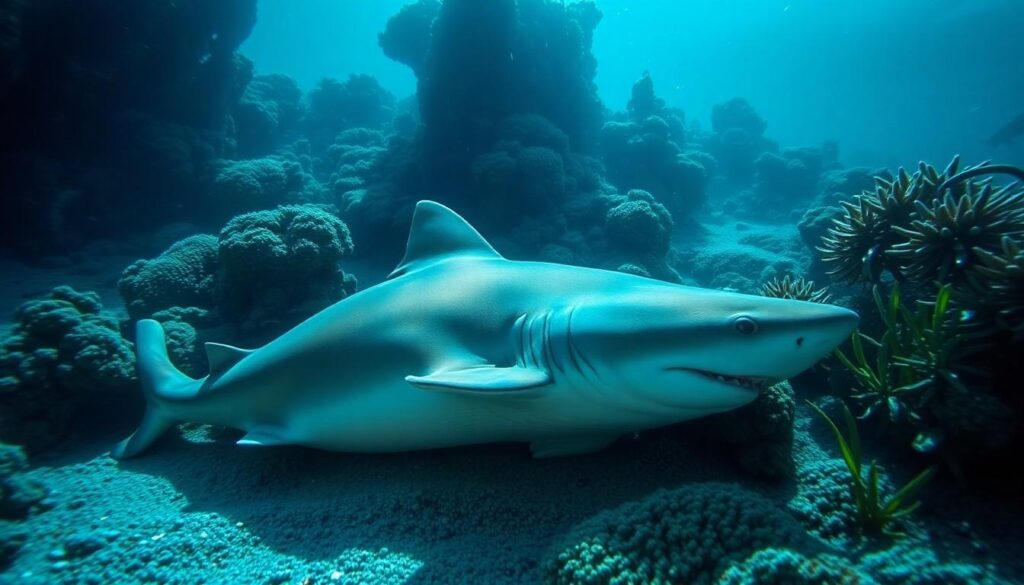Sharks are some of the ocean’s most fascinating creatures, but their sleeping habits might surprise you. Unlike most animals, sharks don’t sleep in the traditional sense. Instead, they enter a state of rest while remaining partially alert to their surroundings. This unique adaptation allows them to keep swimming and breathing while still getting the rest they need.
You might be wondering how these incredible predators manage to catch some Z’s without being vulnerable to threats. Some species, like the nurse shark, can even rest on the ocean floor. Others must keep moving to ensure water flows over their gills. Understanding how sharks sleep reveals not just their biology but also their remarkable resilience in the wild.
Overview of Shark Sleep Patterns
Sharks exhibit distinct sleep patterns that differ significantly from those of terrestrial animals. Understanding these patterns reveals insights into their adaptations and behaviors.
Types of Sleep States
Sharks enter two primary sleep states: tonic immobility and restful awareness.
| Sleep State | Description |
|---|---|
| Tonic Immobility | A temporary state where sharks become still, often triggered by specific stimuli. This allows them to rest without being entirely vulnerable. |
| Restful Awareness | Sharks maintain partial alertness while swimming or gliding. They slowly reduce activity, enabling their bodies to recharge without completely shutting down. |
Species-Specific Behaviors
Different shark species have evolved various strategies to accommodate their sleep needs.
| Species | Sleep Behavior | Habitat Adaptation |
|---|---|---|
| Nurse Shark | Rests on the ocean floor, using coral reefs or sandy bottoms for protection. | Adapted to stationary rest, allowing water flow over gills. |
| Great White | Must keep moving consistently to facilitate oxygen intake through gills. | Requires constant swimming even during rest periods. |
| Whale Shark | Exhibits slow swimming patterns, alternating between active and restful states. | Feeds on plankton while gradually gliding through the water. |
Adaptive Strategies
Sharks optimize their sleep strategies to enhance survival. They balance their need for rest with the requirements of predation and environmental awareness.
- Sharks employ camouflage when resting, reducing visibility to potential predators.
- They often choose dimly lit environments or areas with less water movement to avoid disturbance.
- Sharks can regulate their body’s oxygen needs by slowing their metabolism during restful awareness.
Shark sleep patterns demonstrate a remarkable balance between alertness and rest, showcasing their adaptability in an aquatic environment. Understanding these unique behaviors enhances the knowledge of their biology and evolutionary success.
Mechanisms of Sleep in Sharks
Sharks utilize unique mechanisms to achieve restful states while ensuring survival. Understanding these processes offers insights into their biology.
Unilateral Brain Function
Sharks exhibit unilateral brain function during sleep, allowing one hemisphere to remain active while the other rests. This adaptation enables sharks to maintain awareness of their surroundings, making it easier to detect predators or prey. Scientists have observed that this behavior occurs particularly in species such as the tiger shark.
| Shark Species | Unilateral Sleep Observed | Context of Activity |
|---|---|---|
| Tiger Shark | Yes | Active hunting or swimming |
| Nurse Shark | No | Resting on ocean floor |
| Great White Shark | Yes | Continuous swimming for oxygen intake |
The Role of Buoyancy
Buoyancy plays a crucial role in how sharks rest. Many species have developed adaptations to utilize the buoyant properties of water, reducing energy expenditure while resting. For instance, nurse sharks can rest on the ocean floor due to their heavier bodies, while pelagic species like great whites must keep moving to prevent sinking.
| Shark Species | Buoyancy Adaptation | Sleep Behavior |
|---|---|---|
| Nurse Shark | Rest on sea floor | Dolphin-like swimming when alert |
| Hammerhead Shark | Use of fins for stability | Continual movement for respiration |
| Whale Shark | Slow swimming for rest | Alternate active and restful phases |
Types of Sharks and Their Sleeping Behaviors
Sharks exhibit varied sleeping behaviors based on their species and environment. Understanding these differences highlights their adaptations for survival in diverse marine habitats.
Coastal Sharks
Coastal sharks, such as nurse sharks and blacktip reef sharks, demonstrate unique resting behaviors tailored to their environments. Nurse sharks often rest on the ocean floor, using their buoyancy to conserve energy. They can even be observed resting in caves or under ledges during the day.
The blacktip reef shark, on the other hand, remains active but alternates between periods of swimming and gliding. This behavior allows it to maintain water flow over its gills while conserving energy when necessary.
| Species | Resting Behavior | Environment |
|---|---|---|
| Nurse Shark | Rest on the ocean floor | Coastal areas, reefs |
| Blacktip Reef Shark | Alternates swimming and gliding | Shallow coastal waters |
Deep-Sea Sharks
Deep-sea sharks, including the cookiecutter shark and the lanternshark, adapt their sleeping strategies to the extreme conditions of the deep ocean. Cookiecutter sharks practice tonic immobility, allowing them to remain still while minimizing exposure to predators. This state is often triggered by specific stimuli.
Lanternsharks exhibit restful awareness, swimming slowly in the dark waters while maintaining partial alertness. This adaptation helps them detect both prey and predators.
| Species | Resting Behavior | Depth Range |
|---|---|---|
| Cookiecutter Shark | Tonic immobility | 1,000 to 2,500 feet |
| Lanternshark | Restful awareness | 1,500 to 6,500 feet |
The Importance of Sleep for Sharks
Sharks require sleep for multiple physiological and behavioral reasons. Sleep enhances cognitive functions, including memory consolidation, learning, and predator avoidance. Sharks’ unique sleeping mechanisms promote energy conservation, vital for survival in their environments.
Key Functions of Sleep in Sharks
| Function | Description |
|---|---|
| Energy Conservation | Resting lowers metabolism, allowing sharks to conserve energy. |
| Cognitive Processing | Sleep facilitates learning and memory functions important for hunting. |
| Predator Avoidance | Periods of stillness reduce visibility to potential threats. |
Sharks adapt their sleep patterns to environmental pressures. Sleep effects vary depending on habitat and species. Coastal sharks often find safety in structured environments, while pelagic sharks must remain vigilant in open waters.
Species-Specific Sleep Strategies
| Species | Sleep Strategy | Environment Type |
|---|---|---|
| Nurse Sharks | Rest on ocean floor during low activity periods | Coastal |
| Great Whites | Continuous swimming to secure oxygen for gill breathing | Pelagic |
| Whale Sharks | Alternates between active swimming and resting | Open ocean |
| Lantern Sharks | Exhibits restful awareness, swimming slowly in darkness | Deep-sea |
Sharks undergo sleep states that differ from mammalian patterns, evidenced through unilateral brain function. This adaptation allows them to control one hemisphere’s activity while resting the other, ensuring awareness of surroundings. This behavior particularly aids in avoiding predators.
Advantages of Buoyancy in Sleep
The buoyancy characteristics of sharks provide significant advantages for resting. Pelagic species convert energy-efficient swimming into a form of rest. Alternatively, benthic species like nurse sharks optimize their weight by resting motionless on the ocean floor.
| Species | Buoyancy Strategy | Benefit |
|---|---|---|
| Nurse Sharks | Rest on ocean floor, using buoyancy to avoid exertion | Reduces energy loss |
| Great Whites | Continuous swimming to prevent sinking | Ensures gill function |
Sleep serves critical roles in sharks’ survival, contributing to their ability to thrive in diverse marine ecosystems. Understanding these mechanisms offers deeper insights into shark biology and evolution.
Conclusion
Sharks’ unique sleeping habits reveal their incredible adaptations to survive in diverse marine environments. By balancing rest with alertness they maintain their predatory edge while conserving energy. Understanding these behaviors not only highlights the complexity of shark biology but also emphasizes the importance of preserving their habitats.
As you delve deeper into the fascinating world of sharks remember that their ability to rest while remaining aware is a testament to their resilience. This knowledge enriches your appreciation of these magnificent creatures and underscores the critical role they play in ocean ecosystems.
Frequently Asked Questions
Do sharks sleep like humans?
Sharks do not sleep the same way humans do. Instead, they enter a state of rest while remaining partly alert, allowing them to continue swimming and breathing.
How do different shark species rest?
Different shark species have unique resting behaviors. For example, nurse sharks rest on the ocean floor, while great whites must keep swimming to ensure proper water flow over their gills.
What are the two primary sleep states in sharks?
The two primary sleep states in sharks are tonic immobility, a temporary stillness minimizing vulnerability, and restful awareness, where they swim while maintaining partial alertness.
Why is buoyancy important for sharks’ sleep?
Buoyancy helps sharks reduce energy expenditure while resting. Nurse sharks can rest on the ocean floor, while pelagic species like great whites must keep swimming to avoid sinking.
What is unilateral brain function in sharks?
Unilateral brain function refers to sharks having one hemisphere of their brain active while the other rests. This adaption helps them stay aware of their surroundings and detect predators or prey.
How does sleep enhance a shark’s survival?
Sleep enhances a shark’s survival by improving cognitive functions like memory, learning, and predator avoidance. It allows them to adapt their sleep patterns to environmental pressures.
What role does camouflage play in shark sleep?
Camouflage plays a vital role in a shark’s sleep strategy, allowing them to choose dimly lit environments to maximize safety and minimize detection by predators while resting.


